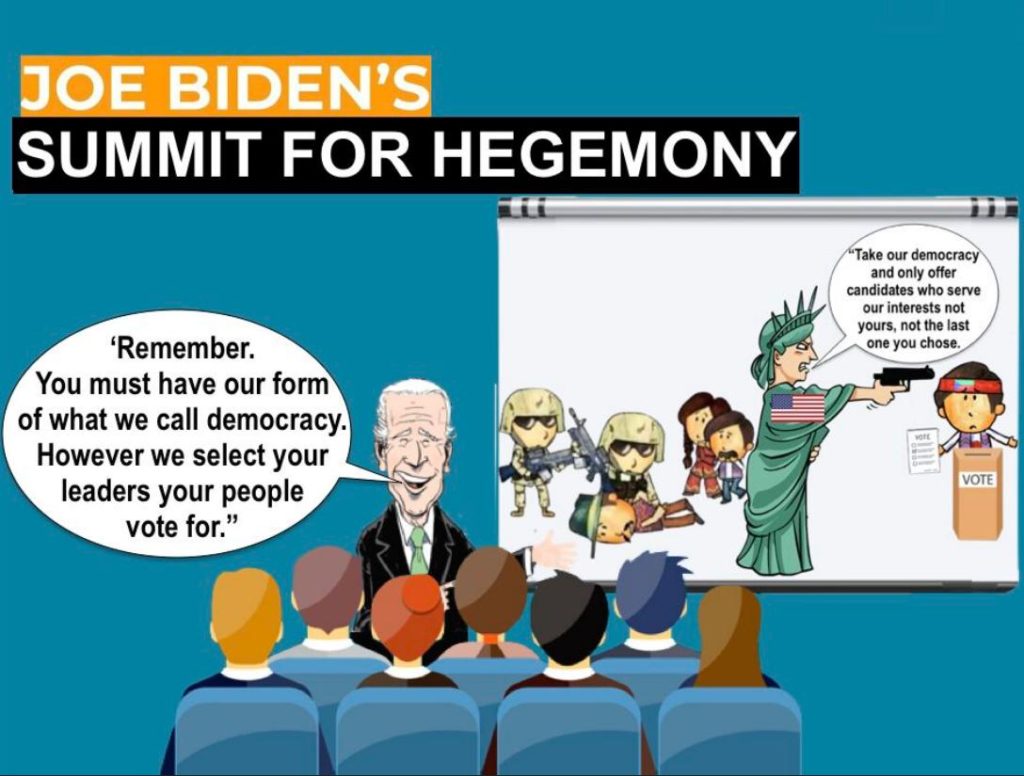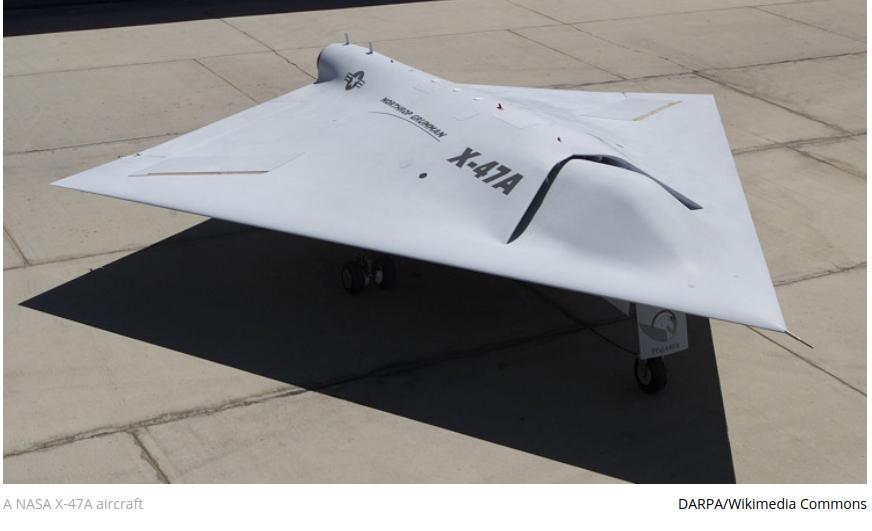Oh my goodness! Trillions of dollars in rebuilding America. That means roads, bridges, trains, infrastructure, and factories. Trillions of dollars in spending. There is no doubt that with this enormous outlay of spending that American can catch up and overtake China. The inflation will be worth it. Right? Don’t be so sure.
There’s not much in the way of actual STEM budgeting. It’s all FIRE nonsense. Here we talk about it.
I Read Biden’s Build Back Better Plan and…Oh, My God
November 11, 2021
The White House’s official press release announcing the Build Back Better Act (BBB) pitches it as a “PLAN TO REBUILD THE MIDDLE CLASS.” It rhapsodizes about “working families” squeezed by the economy, and reminds voters that “Biden promised to rebuild the backbone of the country — the middle class.”
A cartoon illustrates the sort of person who would benefit from Biden’s Build Back Better programs: “Linda,” a white woman, who works at a manufacturing plant but struggles to raise her son, “Leo.”

One thing the White House’s official press release did not mention is that almost all of the $2 trillion doled out under BBB is expressly designated for Black, Latino, Native American, Asian American, Pacific Islander and non-English speaking individuals. White Americans will get nothing and like it.
Over and over again, the bill is written expressly NOT to help the hardworking Linda, apparently because she is white.
Here are just a few examples:
— $1 billion to Native American, Alaska Native and Native Hawaiian communities for housing “needs.”
— $500 million for minority-serving schools of medicine.
— $112 million for teacher preparation programs at Historically Black Colleges and Universities (HBCUs) and Minority Serving Institutions (MSIs).
— $75 million for culturally appropriate care management and services for older individuals who are racial and ethnic minorities or are underserved due to sexual orientation or gender identity.
— $75 million to study maternal health for pregnant and postpartum minority individuals.
— $50 million study maternal mortality among minorities.
— $50 million to improve behavioral health outcomes for communities of color with substance abuse.
— $75 million to increase research capacity at minority-serving institutions.
And on and on and on.
The very first item in Title II of the bill, titled “ELEMENTARY AND SECONDARY EDUCATION,” is a program to distribute more than $100 million in grants to address “low diversity within the teacher and school leader workforce.”
To be eligible for a grant, the recipient must have a plan “to increase the diversity of qualified individuals entering into the teacher, principal, or other school leader workforce.”
Similarly, the first provision of BBB’s “ECONOMIC DEVELOPMENT” section is: “Minority Business Development Agency.”
But wait — here’s a plot twist!
This part also includes something for rural America! (So Democrats have heard of Appalachia.)
Twenty-one percent of the country is rural. Twenty-four percent is non-white. Guess how the money is divvied up?
One billion dollars for minorities and $200 million for “rural business centers.”
Even provisions that don’t explicitly exclude whites, turn out, on closer examination, to exclude whites. I’ve never seen so many synonyms for “non-white,” such as “persistent poverty communities,” “historically economically distressed,” “historical injustice” and “underserved communities.”
Hang on, Ann — what makes you think “underserved” means “non-white”?
I refer you to page 111 of the bill: “This section also defines an ‘underserved community’ as a group of people who have been systematically denied the full opportunity to participate in aspects of economic, social, and civic life. Underserved communities include Black, Latino, Indigenous and Native American persons, Asian American and Pacific Islanders, other persons of color, [etc.].”
How about changes to our environmental laws?
White people love the environment!
Sorry, out of luck, again, white boy. BBB allocates almost $7 billion for …
“national service programs to carry out projects related to climate resilience and mitigation.”
Unfortunately, however, all those billions have to go to “entities that serve and have representation from low-income communities …; utilize culturally competent and multilingual strategies; … implemented by diverse participants from communities being served.”
One billion dollars of the “Climate Resilience and Mitigation” loot is specifically directed to “individuals who were formally incarcerated.” [Sic.]
Sure, climate change is important — but not as important as giving money to convicted felons!
What the hell happened to Linda?
Linda is wearing a hardhat, so her job has probably been outsourced. Maybe she’ll be helped by BBB’s humongous expansion of the Trade Adjustment Assistance program (TAA).
That’s the law passed in the 1960s to compensate American workers whose jobs have been shipped abroad by globalist swine who couldn’t care less about their fellow Americans and don’t mind that every single thing we need, including masks and medicine, is made in China.
Surely, some white people will qualify for that — steelworkers, autoworkers, glass, plastic and paper manufacturing employees.
In fact, the BBB hijacks the whole idea of compensating globalism’s losers and turns the TAA into just another massive welfare scheme.
Both the eligibility requirements and payment amounts are expanded beyond all reason, entitling “workers” to years and years of payouts, with no minimum employment period required, and no stipulation that trade has anything to do with the loss of their jobs.
Thus, for example, a program that is — again — meant to remunerate workers whose jobs were shipped abroad will now offer assistance to public sector employees.
How does a government employee lose a job at all — much less to trade? (I only wish we had Chinese people running our grade schools.)
Naturally, states will be required to work with “training providers” that have a proven track record serving “Black, Latino, Indigenous and Native American persons, Asian American and Pacific Islanders, other persons of color, members of other minority communities” and so on.
Republicans seem to think that if they just talk about how much Biden’s BBB plan costs, their job is done. They ought to read the bill. It might prompt them to finally say something about the Democrats’ clear animus against white Americans.
Conclusion
Imagine. Imagine trillions of dollars going into these urban enclaves to serve the 13% of society. What will be the result? Will it be many bright and shining cities full of impressive skyscrapers, fast high speed trains, and more parks and infrastructure?
Where will the money go to, and who will have it, and what will they use it on? Because you KNOW that there is going to be a lot of holes in those massive sacks of money. So who is going to really benefit?
- The under-employed and under-privileged?
- Or the very wealthy that runs the cities like the mob bosses of old?
And of the money that flows to these areas, and those that flow out, what about the rest of the nation? Like Trump’s budget that make the Wall Street Bankers fantastically wealthy, this is poised to make the city mob bosses fantastically wealthy as well.
Who will not get wealthy?
I see the makings of a massive and colossal storm, and I do not want to be at ground zero when it hits. Look I am not being racist, I am being real. You just cannot exclude people from a budget by their race, upbringing or social standing on a whim and NOT expect consequences.
I am worried about those consequences.
And you should be as well.
It wouldn’t be so bad if there was some balance in the budget, but there isn’t any. It’s all a lopsided manifestation of corruption.
I have no answers, but I see no real changes anywhere in government structure. Just more of the same race baiting, underhand dealings and crime and corruption. For a nation that is supposed to be color-blind to race, this bill is the most racist document I have ever heard and read about. And that is disturbing. Because, knowing what I do know about the see-saw of American politics, that when the tide of public opinion flows in the other direction…
…things are going to get really, really bad. video 26MB
Ann said
How does a government employee lose a job at all — much less to trade? (I only wish we had Chinese people running our grade schools.)
Well, it would American schools look like then? Well they would look like this…
Here’s a video about the roll call in first grade. video 25MB
Here’s a video on school food discipline, and eating everything that is on your plate. video 40MB
School; it would look like this. video 83MB
Second grade roll call. China. Discipline. video 6MB
School assembly practice. And it would look like this. video 55MB
And it would look like this. video 25MB
And like this too. video 27MB
America really needs to up it’s game instead of playing the blame game and pointing fingers. It needs to accept that the government is a travesty, the society is fucked up, and it is in it’s death thrall.
Do you want more?
I have more posts like this in my New Beginnings 2 index here… New Beginnings 2 .
More Links
Master Index .You’ll not find any big banners or popups here talking about cookies and privacy notices. There are no ads on this site (aside from the hosting ads – a necessary evil). Functionally and fundamentally, I just don’t make money off of this blog. It is NOT monetized. Finally, I don’t track you because I just don’t care to.
- You can start reading the articles by going HERE.
- You can visit the Index Page HERE to explore by article subject.
- You can also ask the author some questions. You can go HERE to find out how to go about this.
- You can find out more about the author HERE.
- If you have concerns or complaints, you can go HERE.
- If you want to make a donation, you can go HERE.






